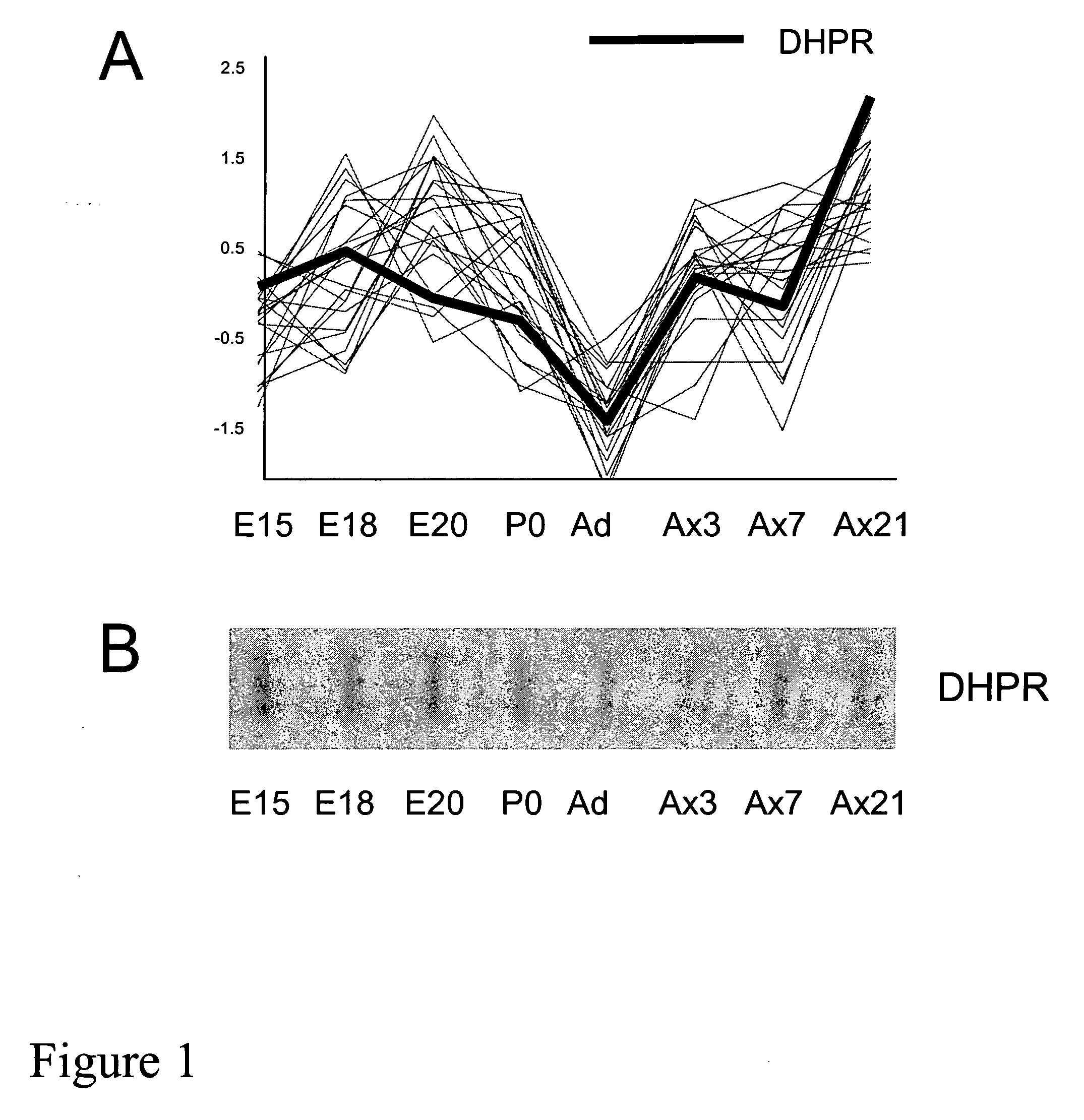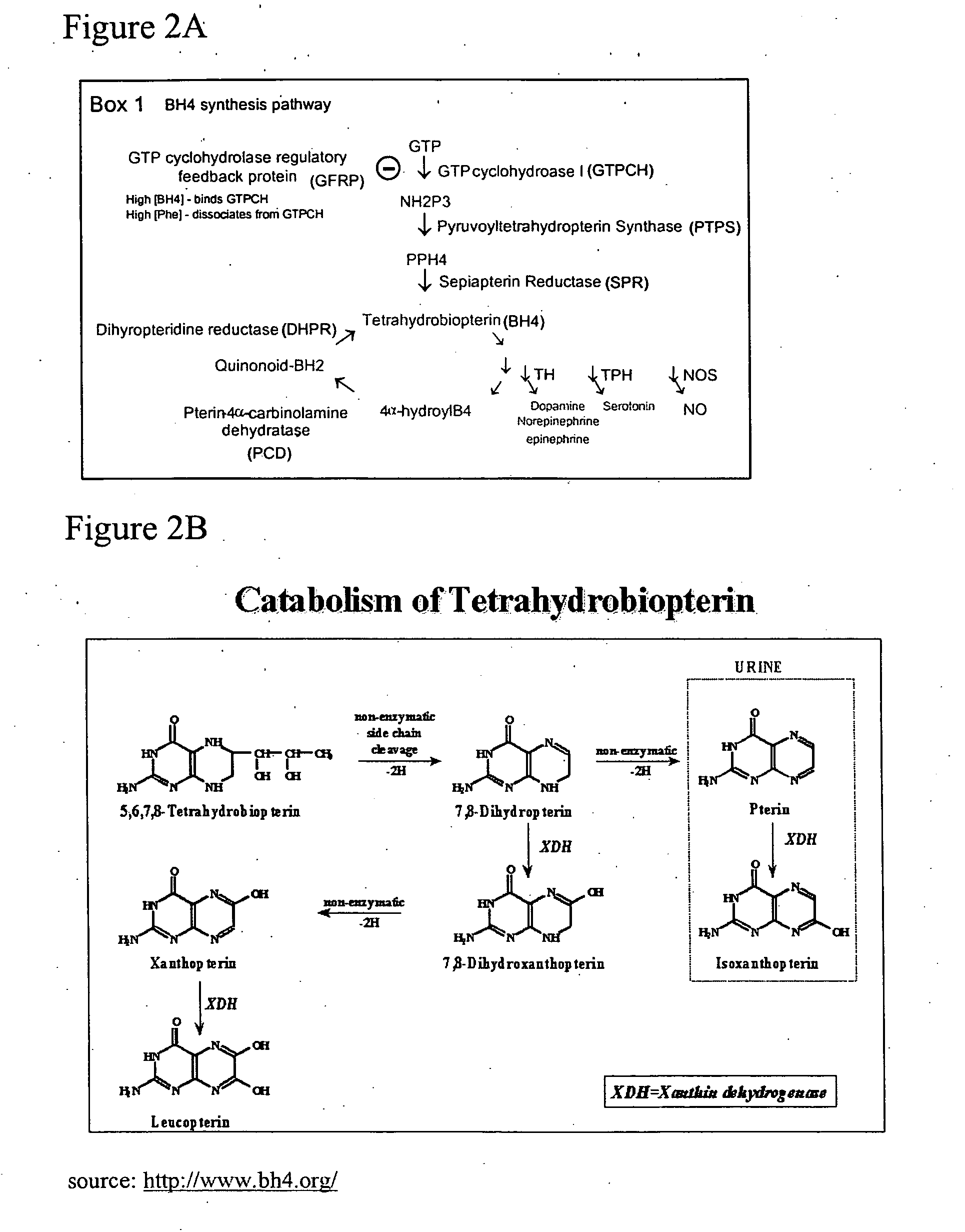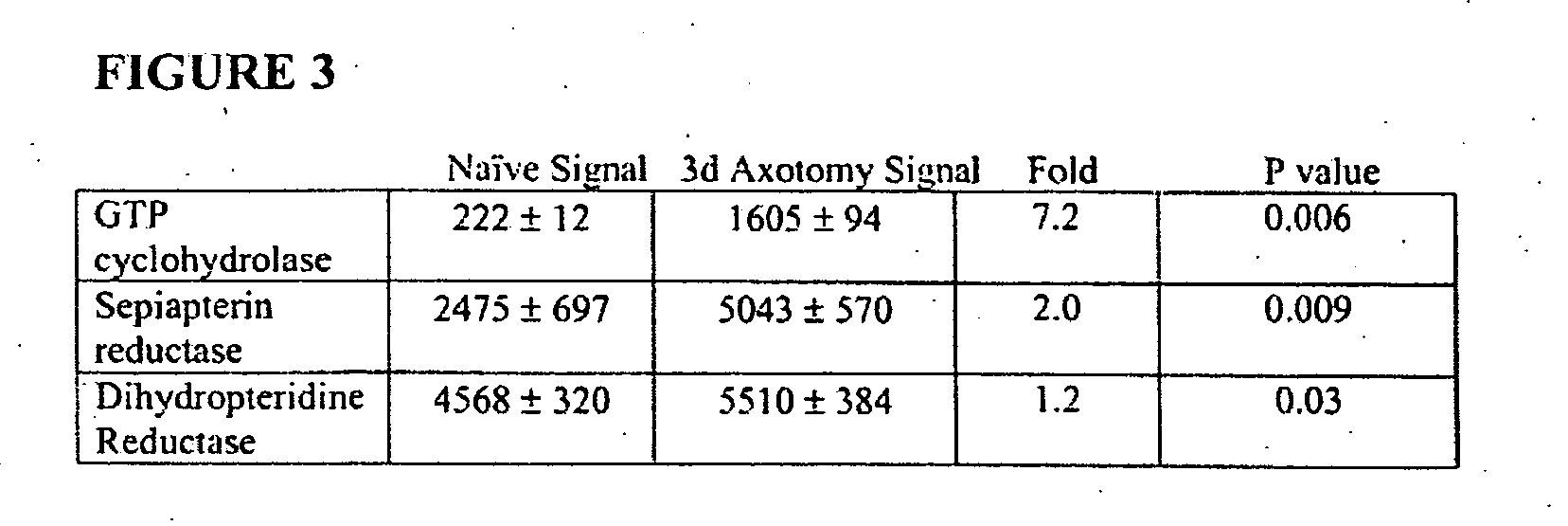Methods for treating pain
a pain and pain technology, applied in the field of pain treatment methods, can solve the problems that the use of chronically occurring agents is often not recommended, and achieve the effects of reducing the level or activity of bh4 attenuating pain, reducing the synthesis or action of bh4, and reducing the synthesis or action of bh4
- Summary
- Abstract
- Description
- Claims
- Application Information
AI Technical Summary
Benefits of technology
Problems solved by technology
Method used
Image
Examples
example 1
Induction of Synthetic Enzymes of the BH4 Pathway by Peripheral Nerve Injury
[0192] Transection of the peripheral axons of primary sensory neurons results in profound alterations in their metabolism, regenerative capacity, survival, excitability, transmitter function, and sensitivity to diverse extrinsic and intrinsic signals. These changes are mediated by transcriptional alterations triggered both by the loss of trophic support from peripheral target organs and by novel signals generated at the injury site. These transcriptional changes lead to adaptive responses, such as the capacity to survive the injury and re-grow the injured axon, as well as maladaptive responses that can result in a change in sensation, including the generation of neuropathic pain.
[0193] High-density rat oligonucleotide microarrays have been used to detect changes in gene expression in the dorsal root ganglion (DRG) following sciatic nerve transection (axotomy). The DRG represents a dense collection of cell ...
example 2
Validation of Microarray Analysis
[0196] The induction of BH4 synthetic enzymes by axotomy was next confirmed by various methods, such as Northern blot analysis, Northern slot blot analysis, in situ hybridization, and Western blot analysis. A sample from each group was prepared from independent L4 and L5 DRG RNA samples extracted from different groups of animals than those used for the arrays. FIG. 1B represents a Northern slot blot analysis showing the expression profile of DHPR during embryonic development and in the adult, before and after axotomy and thereby confirming our microarray data. Northern Blot analysis to detect GTPCH mRNA levels in naïve DRG and 3 days following injury clearly show the marked induction of two transcripts of 3 kb and 1.2 kb (see FIG. 4A). FIG. 3 summarizes the degree of the induction of BH4 synthetic enzymes in DRG following axotomy. In situ analysis further confirmed the induction of GTPCH mRNA in neurons of the DRG three days post peripheral nerve in...
example 3
Changes in BH4 Synthetic Enzymes in Neuropathic and Inflammatory Pain Models
[0197] Triplicate Affymetrix microarrays were used to establish the time course of changes of expression of the BH4 synthetic pathway members (GTPCH, SPR and DHPR as well as 6-pyruvoyl tetrahydropterin synthase and the feedback regulatory protein, GTPCH feed-back regulatory protein) in the DRG and in the dorsal horn of the spinal cord in three independent peripheral neuropathic pain models and after peripheral inflammation. GTPCH I, SPR, PTPS and DHPR were all upregulated by a substantial degree and for prolonged periods in the DRG in all three peripheral neuropathic pain models (FIGS. 6A-6J). The mRNA for all these enzymes was detectable in the dorsal horn (i.e. are constitutively expressed) but showed minimal alterations in expression in the pain models. In both the DRG and dorsal horn, peripheral inflammation also did not produce marked changes in the constitutive basal level of expression of the BH4 syn...
PUM
| Property | Measurement | Unit |
|---|---|---|
| Fraction | aaaaa | aaaaa |
| Fraction | aaaaa | aaaaa |
| Fraction | aaaaa | aaaaa |
Abstract
Description
Claims
Application Information
 Login to View More
Login to View More - R&D
- Intellectual Property
- Life Sciences
- Materials
- Tech Scout
- Unparalleled Data Quality
- Higher Quality Content
- 60% Fewer Hallucinations
Browse by: Latest US Patents, China's latest patents, Technical Efficacy Thesaurus, Application Domain, Technology Topic, Popular Technical Reports.
© 2025 PatSnap. All rights reserved.Legal|Privacy policy|Modern Slavery Act Transparency Statement|Sitemap|About US| Contact US: help@patsnap.com



